Effective Hemorrhoids Treatment: Relief & Prevention Tips
Struggling with hemorrhoids can be uncomfortable and distressing, but finding relief is within reach. Whether you’re experiencing mild discomfort or more severe symptoms, understanding how to effectively manage hemorrhoids is key. From simple lifestyle changes to targeted treatments, explore actionable strategies to alleviate pain and regain comfort. Hemorrhoids, also known as piles, are swollen veins in the lower rectum and anus. They can be internal, which means they are inside the rectum, or external, which means they are under the skin around the anus. They can be caused by a variety of factors, including straining during bowel movements, chronic constipation, pregnancy, obesity, and sitting for long periods of time. In some cases, surgery may be necessary to remove the hemorrhoids. It is important to speak with a healthcare provider if you are experiencing symptoms of hemorrhoids to determine the best course of treatment for your individual needs. We will discuss the following topics:
Physiology of the anus and rectum
Causes of hemorrhoids
Types of hemorrhoids
Pathophysiology of hemorrhoids
Risk factors for hemorrhoids
Symptoms of hemorrhoids
Diagnosis of hemorrhoids
Anal fissure
Hemorrhoids and pregnancy
Prevention of hemorrhoids
Complications of hemorrhoids
Treatment of hemorrhoids
Suppositories
How to insert a suppository
Management of hemorrhoids
Home remedies for hemorrhoids
Herbal remedies for hemorrhoids
Living with hemorrhoids
When to seek urgent medical care
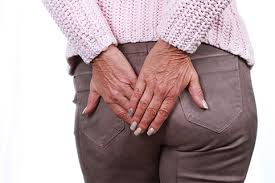
Physiology of the anus and rectum
The anus and rectum are part of the gastrointestinal (GI) tract and play important roles in the elimination of waste from the body. The anus is the opening at the end of the digestive tract through which stool exits the body. The rectum is the last part of the large intestine, which connects the colon to the anus.
The walls of the rectum are made up of smooth muscle, which contracts to push stool toward the anus. The anus is surrounded by two rings of muscle, known as the internal and external anal sphincters. The internal anal sphincter is made up of smooth muscle and is under involuntary control, while the external anal sphincter is made up of skeletal muscle and is under voluntary control. The external anal sphincter is what allows us to control the timing of bowel movements.
The lining of the rectum and anus is made up of mucous membrane, which contains glands that produce mucus to lubricate the area during bowel movements. Nerves in the anus and rectum send signals to the brain to let us know when it is time to have a bowel movement.
The anus and rectum are also rich in blood vessels, which can become swollen and painful in the case of hemorrhoids.
Types of hemorrhoids
It is possible to have both internal and external hemorrhoids at the same time. It is important to speak with a healthcare provider if you are experiencing symptoms of hemorrhoids to determine the type and severity of your condition and to determine the best course of treatment. There are two main types of hemorrhoids: internal and external.
Internal hemorrhoids: These are located inside the rectum and are not visible from outside the body. They can be further classified into four grades:
- Grade 1: These hemorrhoids are small and do not prolapse, which means they do not protrude from the anus.
- Grade 2: These hemorrhoids are larger than grade 1 hemorrhoids and may prolapse during a bowel movement but return to their normal position afterward.
- Grade 3: These hemorrhoids prolapse during a bowel movement and may require manual repositioning.
- Grade 4: These hemorrhoids are large and prolapsed, and they cannot be repositioned manually. They may cause significant discomfort and bleeding.
External hemorrhoids: These are located under the skin around the anus and are visible from outside the body. They can be painful and may cause bleeding during bowel movements.
Pathophysiology of hemorrhoids
The pathophysiology of hemorrhoids involves the development of swollen veins in the lower rectum and anus. This can occur due to increased pressure on the veins, leading to dilation and stretching of the veins. Several factors can contribute to increased pressure in the anal canal and rectum, including:
Straining during bowel movements: This can occur due to constipation, diarrhea, or other factors that require increased effort during bowel movements.
Prolonged sitting or standing: This can put pressure on the veins in the anal area, leading to swelling.
Pregnancy: The increased pressure of the uterus on the pelvic veins can cause hemorrhoids to develop.
Obesity: Excess weight can put pressure on the veins in the lower rectum and anus.
As the veins in the anal canal and rectum become more dilated and stretched, they can become inflamed, painful, and prone to bleeding. Inflammation can also cause itching and irritation around the anus.
The severity of hemorrhoids can range from mild discomfort to severe pain, bleeding, and difficulty with bowel movements. Treatment options depend on the severity of the hemorrhoids and may include lifestyle changes, over-the-counter medications, or in severe cases, surgery.
Causes of hemorrhoids
They are caused by swollen veins in the lower rectum and anus. The exact cause of hemorrhoids is not fully understood, but there are several factors that can increase the risk of developing hemorrhoids, including:
Straining during bowel movements: This can happen when people have constipation or diarrhea, and it puts pressure on the veins in the anus and rectum.
Chronic constipation: People who have chronic constipation are more likely to develop hemorrhoids because they often strain during bowel movements.
Pregnancy: Hemorrhoids are more common in women during pregnancy due to the increased pressure on the veins in the pelvic region.
Sitting for long periods of time: People who sit for extended periods, such as truck drivers or office workers, are at an increased risk of developing hemorrhoids.
Aging: As we age, the tissues in the anus and rectum can weaken, making hemorrhoids more susceptible to swelling and inflammation.
Genetics: People with a family history of hemorrhoids are more likely to develop the condition themselves.
Chronic diarrhea: Frequent diarrhea can also contribute to the development of hemorrhoids by irritating and inflaming the rectal tissue.
Obesity: Being overweight or obese can put extra pressure on the veins in the rectum and anus, increasing the likelihood of hemorrhoids.
Heavy lifting: Lifting heavy objects can put strain on the pelvic floor muscles, leading to increased pressure on the veins in the rectum and anus.
Certain medical conditions: Hemorrhoids can be a symptom of other medical conditions, such as liver disease or inflammatory bowel disease.
It is important to note that not everyone with these risk factors will develop hemorrhoids. However, if you are experiencing symptoms of hemorrhoids or are at risk for developing the condition, it is important to talk to your healthcare provider to determine the best course of action.
Symptoms of hemorrhoids
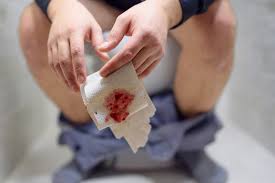
The symptoms can vary depending on the type and severity of the condition. Some common symptoms include:
Itching or irritation in the anal area
Pain or discomfort during bowel movements
Swelling around the anus
Bleeding during bowel movements
Prolapse of internal hemorrhoids, which may protrude through the anus
A lump or swelling around the anus
Mucus discharge from the anus
Inability to fully empty the bowel due to pain or discomfort
Diagnosis of hemorrhoids
A healthcare provider will perform a physical exam and ask about symptoms and medical history. The provider may also perform a digital rectal exam, in which they insert a gloved, lubricated finger into the rectum to feel for any abnormalities.
In some cases, additional tests may be ordered to rule out other conditions or to determine the severity of the hemorrhoids and to rule out other conditions, such as inflammatory bowel disease or colorectal cancer. These may include:
Anoscopy: A thin, flexible tube with a camera on the end is inserted into the anus to view the rectum and lower part of the colon.
Sigmoidoscopy: A similar procedure to anoscopy, but with a longer tube that allows for visualization of the rectum and lower colon.
Colonoscopy: A procedure that allows for visualization of the entire colon and rectum using a long, flexible tube with a camera on the end.
Barium enema: A test in which a liquid containing barium is injected into the rectum and colon, and X-rays are taken to visualize the structures.
Anal fissure
An anal fissure is a small tear or cut in the lining of the anus. It can occur when the tissues around the anus are stretched or torn during bowel movements, often as a result of constipation or passing hard stools. Other common causes include diarrhea, childbirth, and anal sex.
Symptoms of an anal fissure may include:
Pain during bowel movements
Pain or discomfort in the anal area, especially after bowel movements
Rectal bleeding, typically with bright red blood on the toilet paper or in the toilet bowl
Itching, swelling or irritation in the anal area
A small, visible tear or crack in the skin around the anus
In many cases, an anal fissure can heal on its own with proper self-care, such as increasing fiber and water intake to soften the stool, using over-the-counter creams to reduce pain and inflammation, and soaking in warm water baths. If symptoms persist or become severe, medical treatment may be necessary, including prescription medications or surgery. It is important to see a healthcare provider if you suspect you have an anal fissure to rule out other conditions and receive appropriate treatment.
Hemorrhoids and pregnancy
Hemorrhoids are a common occurrence during pregnancy, with up to 50% of pregnant women experiencing the condition. The increased pressure on the veins in the pelvic area due to the growing uterus can cause the veins in the rectum and anus to become swollen and inflamed. Constipation, which is also common during pregnancy, can further exacerbate the condition by causing straining during bowel movements.
Symptoms during pregnancy may include itching, pain or discomfort, bleeding during bowel movements, and swelling or lump around the anus. While hemorrhoids during pregnancy can be uncomfortable, they typically resolve on their own after delivery. However, there are steps pregnant women can take to manage symptoms and reduce the likelihood of developing hemorrhoids:
Drink plenty of water to stay hydrated and help soften stools.
Eat a high-fiber diet to help prevent constipation.
Avoid sitting or standing for prolonged periods of time.
Engage in regular exercise to promote healthy bowel function.
Practice good anal hygiene, such as using moist wipes or gentle, fragrance-free soap after bowel movements.
Avoid straining during bowel movements by using a stool softener or fiber supplement if needed.
It is important for pregnant women to speak with their healthcare provider if they experience symptoms of hemorrhoids, as some treatments may not be safe during pregnancy. Healthcare providers can recommend safe and effective treatments to manage symptoms and reduce discomfort during pregnancy.
Prevention of hemorrhoids
Eat a high-fiber diet: Fiber can help soften stools, making them easier to pass and reducing the need to strain during bowel movements. Aim for at least 25-30 grams of fiber per day.
Stay hydrated: Drinking plenty of water can help prevent constipation and keep stools soft.
Exercise regularly: Regular exercise can help promote healthy bowel function and reduce the risk of developing hemorrhoids.
Avoid straining during bowel movements: Straining can increase pressure on the veins in the rectum and anus, potentially leading to hemorrhoids. If you are having trouble passing stools, try using a stool softener or fiber supplement.
Practice good anal hygiene: Keep the anal area clean and dry and avoid using harsh soaps or wipes. Moist wipes or a gentle, fragrance-free soap can be helpful.
Take breaks from sitting: Prolonged sitting can increase pressure on the veins in the rectum and anus, potentially leading to hemorrhoids. If you sit for long periods of time, take breaks and move around every hour or so.
Don’t delay bowel movements: Holding in bowel movements can cause stool to become harder and more difficult to pass, increasing the risk of developing hemorrhoids.
Complications of hemorrhoids
Blood clots: can form in external hemorrhoids, causing severe pain and swelling. This is known as a thrombosed hemorrhoid and may require medical treatment.
Anemia: Chronic bleeding from hemorrhoids can lead to anemia, a condition where there is a shortage of red blood cells in the body.
Strangulation: In rare cases, internal hemorrhoids can prolapse or protrude outside the anus and become trapped, cutting off blood flow to the affected tissue. This is known as strangulated hemorrhoids and requires immediate medical attention.
Infection: If the area around a hemorrhoid becomes infected, it can cause pain, swelling, and discharge. In severe cases, an abscess may form.
Anal fissure: Hemorrhoids can cause small tears in the lining of the anus, known as anal fissures. This can lead to pain and discomfort during bowel movements.
Management of hemorrhoids
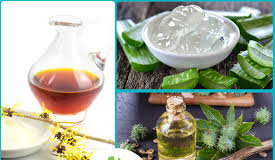
This depends on the severity of symptoms and the type of hemorrhoids. In most cases, hemorrhoids can be treated with simple, non-invasive measures such as lifestyle modifications, topical treatments, and over-the-counter medications. However, more severe cases may require medical procedures or surgery. Here are some common treatments for hemorrhoids:
- Lifestyle modifications: This includes dietary changes to increase fiber and water intake, regular exercise to promote bowel function, and avoiding straining during bowel movements.
- Topical treatments: These include creams, ointments, and suppositories that contain ingredients such as witch hazel, hydrocortisone, or lidocaine to relieve pain, itching, and inflammation.
- Over-the-counter medications: Non-steroidal anti-inflammatory drugs (NSAIDs) such as ibuprofen or acetaminophen can help relieve pain and swelling.
- Hemorrhoidectomy: In rare cases, surgery may be necessary to remove large or prolapsed hemorrhoids.
In addition to these management strategies, it is important to maintain good hygiene practices, such as gently cleaning the anus after bowel movements and wearing loose, comfortable clothing. It is also important to avoid sitting for long periods of time and to take breaks to stand and stretch regularly. - Medical procedures to shrink or remove hemorrhoids.
-
- Rubber band ligation: This is a common outpatient procedure where a small rubber band is placed around the base of an internal hemorrhoid to cut off its blood supply, causing it to wither and fall off.
- Sclerotherapy: This involves injecting a chemical solution into the hemorrhoid to shrink it.
- Infrared coagulation: This procedure uses heat to cause the hemorrhoid to shrink and shrivel.
Suppositories
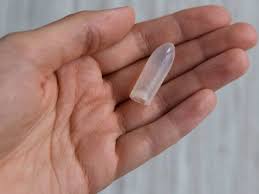
Suppositories are a type of medication delivery system that are inserted into the rectum to deliver medication directly to the affected area. They are commonly used to treat conditions such as hemorrhoids, constipation, and inflammatory bowel disease.
Hemorrhoid suppositories are typically made from natural ingredients such as witch hazel or cocoa butter and may contain additional ingredients such as hydrocortisone to relieve pain and inflammation. They work by lubricating the anus and reducing inflammation in the affected area.
Suppositories for constipation may contain active ingredients such as glycerin or bisacodyl, which help to soften stool and stimulate bowel movements.
Suppositories are generally safe and effective, but can cause some side effects such as irritation, itching, or burning in the rectal area. It is important to follow the instructions provided by your healthcare provider or the medication label to ensure proper use and avoid complications. If you experience persistent or severe side effects, contact your healthcare provider.
How to insert a suppository
Inserting a suppository can be a bit uncomfortable or awkward at first, but it’s a straightforward process that can be done in a few simple steps:
Wash your hands thoroughly with soap and warm water.
Remove the suppository from its packaging and unwrap it.
Find a comfortable position. You may want to lie down on your side with your knees bent, or squat down slightly.
Gently insert the suppository into your rectum, pointed end first. You can use your finger or a special applicator that may come with the suppository.
Push the suppository in as far as possible with your finger or applicator.
Stay lying down or seated for several minutes to allow the suppository to dissolve and absorb into your body.
Wash your hands thoroughly again.
It is important to read the instructions on the medication label carefully before using the suppository to ensure proper use and avoid any complications. If you have difficulty inserting the suppository, contact your healthcare provider for advice.
Home remedies for hemorrhoids

It is important to note that home remedies may not provide complete relief for all cases of hemorrhoids, and it is important to see a healthcare provider if you experience persistent or severe symptoms. It is important to note that while these remedies can provide relief from the symptoms of hemorrhoids, they may not be effective for all cases. There are several home remedies that can provide relief from the discomfort of hemorrhoids:
Sitz baths: Soaking the affected area in warm water for 10-15 minutes several times a day can help relieve pain and reduce inflammation.
Cold compresses: Applying a cold compress or ice pack to the affected area for 10-15 minutes at a time can help reduce swelling and discomfort.
Apple cider vinegar: Applying a small amount of diluted apple cider vinegar to the affected area with a cotton ball can help reduce itching and irritation.
High-fiber diet: Eating a diet rich in fiber can help soften stools and reduce the strain during bowel movements.
Hydration: Drinking plenty of water can help soften stools and promote regular bowel movements.
Warm baths: Taking warm baths can help provide relief from the discomfort of hemorrhoids by reducing inflammation and promoting blood flow. The warm water can also help relax the anal sphincter, reducing the risk of injury during bowel movements. Benefits of warm baths include soothing pain and itching, reducing swelling and inflammation, and promoting relaxation. Risks are minimal, although it is important to ensure that the water is not too hot, as this can cause burns or scalding.
Witch hazel: is a natural astringent that can help reduce inflammation and soothe irritated skin. It is often used in the form of a compress or ointment. Applying witch hazel to the affected area with a cotton ball or soft cloth can help soothe the skin and reduce itching. Witch hazel is a natural astringent that can help soothe and shrink hemorrhoids. It works by constricting blood vessels and reducing inflammation. Benefits of witch hazel include reducing pain and itching, reducing swelling and inflammation, and promoting healing. Risks are minimal, although it is important to ensure that you are not allergic to witch hazel, and to avoid applying it to open wounds or broken skin.
Coconut oil: is a natural moisturizer that can help soothe and lubricate the anal area, reducing irritation and promoting healing. Benefits of coconut oil include reducing dryness and itching, promoting skin health, and reducing the risk of infection. Risks are minimal, although it is important to avoid using coconut oil if you are allergic to coconut, and to avoid using it as a lubricant during sexual activity as it can weaken latex condoms.
Aloe vera: Applying aloe vera gel to the affected area can help reduce inflammation and promote healing. Aloe vera is a natural anti-inflammatory and moisturizer that can help soothe and heal the skin. Benefits of aloe vera include reducing pain and itching, reducing swelling and inflammation, and promoting healing. Risks are minimal, although it is important to ensure that you are not allergic to aloe vera, and to avoid using it on open wounds or broken skin. Aloe vera is a natural anti-inflammatory and moisturizer that can help soothe and heal the skin. It is often used in the form of a gel or ointment.
Ice packs: Applying ice packs to the affected area can help reduce swelling and numb pain. Benefits of ice packs include reducing swelling and inflammation, reducing pain and itching, and promoting healing. Risks are minimal, although it is important to ensure that the ice pack is wrapped in a towel or cloth to avoid direct contact with the skin, which can cause ice burn or tissue damage.
Over-the-counter medications: such as creams, ointments, and suppositories can provide relief from the discomfort of hemorrhoids. These medications typically contain ingredients such as hydrocortisone, witch hazel, or lidocaine that can reduce pain, itching, and inflammation. Benefits of over-the-counter medications include providing quick and easy relief from symptoms. Risks are minimal, although it is important to follow the instructions carefully and avoid overuse, which can cause skin thinning or other side effects.
Horse chestnut: 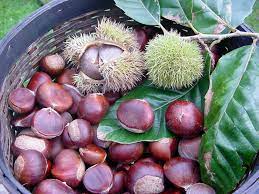 is a common herbal remedy that is believed to help improve circulation and reduce swelling. It is often used in the form of an ointment or cream.
is a common herbal remedy that is believed to help improve circulation and reduce swelling. It is often used in the form of an ointment or cream.
Butcher’s broom:  is another herbal remedy that is believed to improve circulation and reduce swelling. It is often taken in the form of a tea or supplement.
is another herbal remedy that is believed to improve circulation and reduce swelling. It is often taken in the form of a tea or supplement.
Chamomile:  is a natural anti-inflammatory that can help reduce inflammation and soothe irritated skin. It is often taken in the form of a tea or supplement.
is a natural anti-inflammatory that can help reduce inflammation and soothe irritated skin. It is often taken in the form of a tea or supplement.
Calendula:  is a natural anti-inflammatory and antiseptic that can help reduce inflammation and promote healing. It is often used in the form of a cream or ointment.
is a natural anti-inflammatory and antiseptic that can help reduce inflammation and promote healing. It is often used in the form of a cream or ointment.
It is important to note that these herbal remedies may not be effective for all cases of hemorrhoids, and it is important to consult with a healthcare provider before using them, especially if you are pregnant, breastfeeding, or taking any medications. Some herbs may interact with certain medications or have side effects.
Living with hemorrhoids can be uncomfortable, but there are ways to manage the symptoms and improve your quality of life. Here are some tips for living with hemorrhoids:
Practice good hygiene: Keep the anal area clean and dry. After using the bathroom, gently clean the area with a moist wipe or unscented toilet paper. You can also use a sitz bath to clean the area.
Wear comfortable clothing: Avoid tight clothing that can irritate the anal area. Wear loose-fitting clothing made from breathable fabrics like cotton.
Stay hydrated: Drinking plenty of water can help soften stool and make it easier to pass. It can also help prevent constipation, which can aggravate hemorrhoids.
Eat a high-fiber diet: Eating a diet rich in fiber can help soften stool and prevent constipation. Good sources of fiber include fruits, vegetables, whole grains, and legumes.
Exercise regularly: Regular exercise can help improve circulation and prevent constipation. It can also help reduce stress, which can aggravate hemorrhoids.
Use over-the-counter treatments: Over-the-counter treatments like creams, ointments, and suppositories can help relieve itching, pain, and swelling.
Avoid sitting for long periods: Prolonged sitting can increase pressure on the anal area and aggravate hemorrhoids. Try to take breaks and move around every hour or so.
Seek medical attention if necessary: If your hemorrhoids are causing severe pain, bleeding, or other complications, it is important to seek medical attention. Your healthcare provider can recommend treatment options that are right for you.
When to seek urgent medical care
In most cases, hemorrhoids can be managed with home remedies and over-the-counter treatments. However, there are some situations where it is important to seek urgent medical care. Here are some signs that you should seek urgent medical attention for your hemorrhoids:
Severe pain: If you are experiencing severe pain that is not relieved by over-the-counter treatments, you should seek medical attention. Severe pain can be a sign of a blood clot or other complications.
Excessive bleeding: If you are experiencing excessive bleeding from your hemorrhoids, you should seek medical attention. This can be a sign of a more serious condition.
Prolapse: If your hemorrhoids are prolapsed (protruding from the anus) and cannot be pushed back in, you should seek medical attention. Prolapsed hemorrhoids can become strangulated, which is a medical emergency.
Changes in bowel habits: If you are experiencing changes in your bowel habits (such as constipation or diarrhea) in addition to hemorrhoid symptoms, you should seek medical attention. These changes could be a sign of a more serious condition.
Suspected infection: If you have signs of infection, such as fever, chills, or redness and swelling around the anus, you should seek medical attention. Infection can be a serious complication of hemorrhoids.
If you are unsure whether your symptoms require urgent medical attention, it is always best to err on the side of caution and seek medical advice. Your healthcare provider can help determine the best course of action for your specific situation.
Disclaimer: The information provided in this content is for general informational purposes only. It is not intended as medical or healthcare advice, diagnosis, or treatment. Always seek the advice of a qualified healthcare professional with any questions you may have regarding a medical condition or healthcare decisions.

